Oil Spot Glaze: Iridescent Elegance and Structural Precision
Among the celebrated glazes of Jian ware, Oil Spot—known in Japanese as Yuteki Tenmoku (油滴天目)—is famed for its metallic brilliance and mesmerizing patterns. Historical references to this glaze first appeared during Japan’s Ōei era (1394–1427), in texts such as Zenrin Kōka and later in Manji Junno Nikki and Inryōken Nichiroku, indicating the long-standing reverence for this Chinese innovation in Japanese tea culture.

Formation and Aesthetic Features
Oil spot patterns are formed when iron oxides in the glaze crystallize during firing, typically appearing as silver, blue, golden, or iridescent dots against a deep black background. These “spots” emerge through a delicate two-stage process:
-
Oxidizing Phase: The iron-rich glaze is brought to saturation, allowing the red (hematite) and black (magnetite) iron oxides to begin crystallizing as the kiln temperature rises.
-
Reducing Phase: At high temperatures, oxygen is limited, prompting iron ions to precipitate and form spot-shaped crystals near the surface.
Each oil spot crystal may appear:
-
Sunken into the glaze with branched internal flow lines resembling cloud clusters, creating a diffuse, matte texture.
-
Or raised and glossy, with crisp, reflective surfaces and clear ridge lines around the edges—these exhibit mirror-like brilliance.
The Science of Crystallization
Oil spot formation is a prime example of non-uniform nucleation. When iron ions are freed by reduction, they migrate to the glaze surface and begin forming stable crystal nuclei. These nuclei serve as the base for further growth, typically centered within small pits caused by escaping gas bubbles—a structure often referred to as “井口” (well mouth).
Controlling the size and stability of these spots requires:
-
Precise kiln temperature monitoring
-
Long soak periods during firing to allow sufficient time for the iron to crystallize
-
Gradual cooling to preserve the three-dimensional structure and prevent the glaze from collapsing into a flat surface
If cooling is delayed, or the kiln atmosphere fluctuates, the oil spot pattern can fade or lose depth, resulting in visually “flat” bowls lacking the ideal multi-faceted luster.


Mastery Through Materials
A successful oil spot glaze demands:
-
Highly iron-saturated glaze formulation
-
Clay bodies capable of withstanding rapid temperature changes without cracking
-
Proper kiln construction to accommodate strong reduction environments
Even minute variations in glaze viscosity or iron concentration can drastically affect nucleation rates, making this one of the most technically demanding glazes in traditional Chinese ceramics.

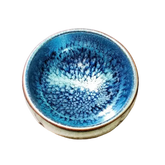


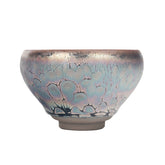
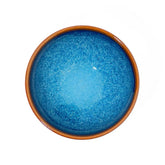

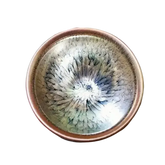
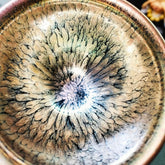


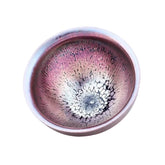


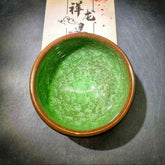
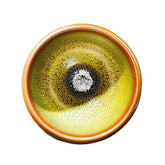
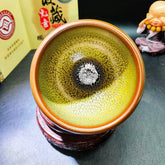


Leave a comment
Please note, comments need to be approved before they are published.